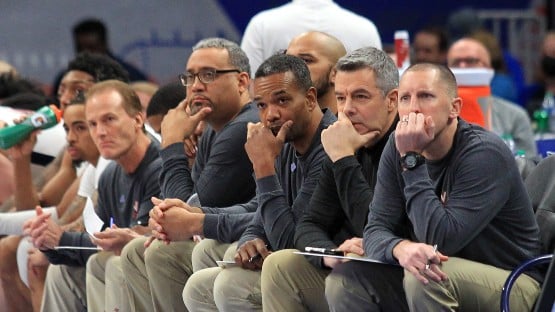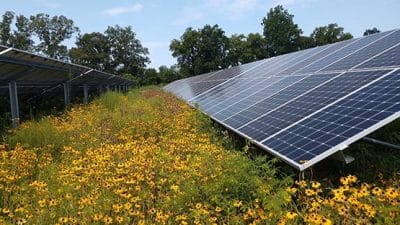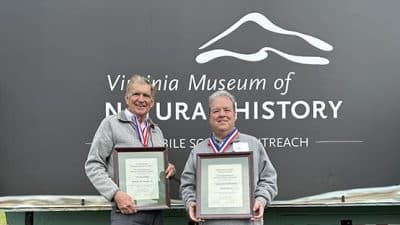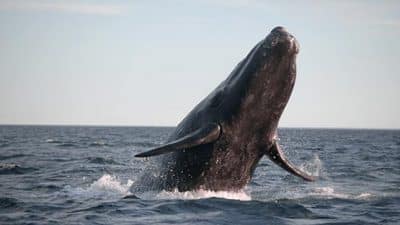
Lt. Gov. Bill Bolling will present the awards at the Science Museum of Virginia’s General Assembly Reception tomorrow, Thursday, Jan. 17, at 6 p.m.
“I am honored to recognize Virginia’s top science talents for 2013,” said Gov. McDonnell. “This year’s outstanding scientists are known worldwide for their contributions in predicting forest development, growth and yield, and for becoming the world’s foremost expert in the field of biomineralization. The company receiving the Governor’s Award for Science Innovation has developed technology that uses copper to enhance everything from footwear, clothing and cosmetics to hard surfaces. I hope that their creativity, contributions and dedication will inspire other Virginians in their scientific studies and pursuits.”
Lt. Gov. Bolling said, “On behalf of the Governor, I am pleased to present Virginia’s Outstanding Scientist Awards and the Governor’s Award for Science Innovation again this year. These recipients have exhibited un-paralleled ingenuity and creativity to advance discoveries benefiting not only Virginians but citizens around the word. Their scientific research is further proof that Virginia’s science sector and research universities are continuing to thrive and grow and will help drive Virginia’s economy into the future.”
“Once again we have a chance to recognize globally significant scientific research taking place across Virginia,” said Conti. “These individuals are improving our quality of life through their stellar accomplishments.”
Virginia’s Outstanding Scientists 2013
Harold E. Burkhart, Ph.D.
Harold E. Burkhart, Ph.D. is the University Distinguished Professor in the Department of Forest Resources and Environmental Conservation at Virginia Tech. He is acknowledged around the world for his unprecedented contributions in developing models for forecasting forest stand development, growth and yield. As demand for forest products increases and area for timber production decreases, the need for efficient management becomes acute and implicit in this is the need for Burkhart’s work which forest managers rely on for making informed forestry decisions and scheduling harvests. Research headed by Burkhart has had far-reaching impact in Virginia, the United States and abroad. Burkhart has addressed questions regarding tree spacing and the impact of thinning on growth and wood properties. He used a particularly efficient experimental design when installing spacing trials in the early 1980s. The stands were measured annually for 25 years, then spacing impacts on growth and wood quality were assessed. Burkhart was able to conclusively show the effects of initial planting density on tree stand height development.
Burkhart’s hundreds of writings include an undergraduate-level book and a recently published advanced-level book, “Modeling Forest Trees and Stands.” He has received numerous forestry awards along with the Distinguished Statistical Ecology Award from the International Congress of Ecology.
Patricia M. Dove, Ph.D.
Patricia M. Dove, Ph.D. is the C.P. Miles Professor of Science in the Department of Geosciences and Director of the Biogeochemistry of Earth Processes research group at Virginia Tech. Using chemical principles and nano-scale analytical methods, she has become the world’s leading expert in the field of biomineralization — the processes by which animals grow skeletons and other functional structures. Her interdisciplinary work, at the interface of earth and life, is also providing insights into how fossil skeletons record changes in environmental conditions over geologic time. Her new work is directed at understanding the consequences of rising carbon dioxide levels, and thus increasingly acid oceans, for the tiny photosynthetic organisms that create much of our planet’s oxygen. Research from her group also has important economic applications through collaborations with Civil Engineering to develop bio-inspired approaches to more sustainable industrial processes. Dove received the F.W. Clarke Medal and twice received the U.S. Department of Energy Best University Research Award. She is a Fellow of the American Geophysical Union, Geochemical Society, European Association of Geochemists, and the Mineralogical Society of America. In 2012, Dove was elected to the National Academy of Sciences.
Dove grew up in Bedford, Virginia, and received her Bachelor and Master degrees from Virginia Tech. She earned a doctorate at Princeton University then completed a National Science Foundation Postdoctoral Fellowship Award at Stanford. She has been at Virginia Tech since 2000.
Governor’s Award for Science Innovation presented by Altria
Cupron Inc.
A private global company based in Richmond, Virginia, and Israel, Cupron is the developer of a proprietary and patented technology that transforms regular products into extraordinary ones by introducing the unique properties of copper, an essential element of the human body.
Cupron Enhanced products — including hard surfaces, footwear, clothing and cosmetics — are helping to improve people’s lives in the consumer, industrial, military and healthcare fields. Whether it is a hospital sheet that is turned into an antimicrobial device, military socks that extend soldier field time or a pillowcase that is turned into a cosmetic device — Cupron improves the quality of life.
In 2010, the world followed the amazing story of 33 Chilean miners who were trapped in a collapsed mine, 2000 feet underground, for 69 days. The physical conditions they encountered in the mine — dirt, high temperature and high humidity — were an ideal environment for fungal and bacterial growth. Cupron Enhanced antimicrobial socks were supplied to the trapped miners through the capsule on day 36 of their ordeal and protected them until their rescue. Cupron’s humanitarian help received headlines around the world.
Cupron and EOS Surfaces, a solid surface manufacturer, jointly received EPA approval to make a Public Health Claim that their copper-enhanced material can kill greater than 99.9% of Gram negative and Gram positive bacteria within two hours of exposure, including MRSA, one of the most common strains of antibiotic-resistant bacteria.
Cupron has microbiologists, virologists and chemical scientists working in U.S. and Israel-based laboratories. With these resources, Cupron constantly invests in expanding the technology’s boundaries and constantly researches new antimicrobial skin enhancement applications for copper.
The commercial deployment of Cupron’s technology is already creating significant benefit across Virginia. Cupron’s product development partner, EOS Surfaces LLC in Norfolk, is selling innovative antimicrobial copper-based counter tops, furniture and other building components; they recently announced an expansion of their manufacturing operations in Norfolk. Importantly, multiple hospital systems in Virginia are planning to use antimicrobial Cupron-enhanced textiles and EOS Surface materials as part of their programs to find technologies that can help to mitigate the problems associated with healthcare associated infections.










